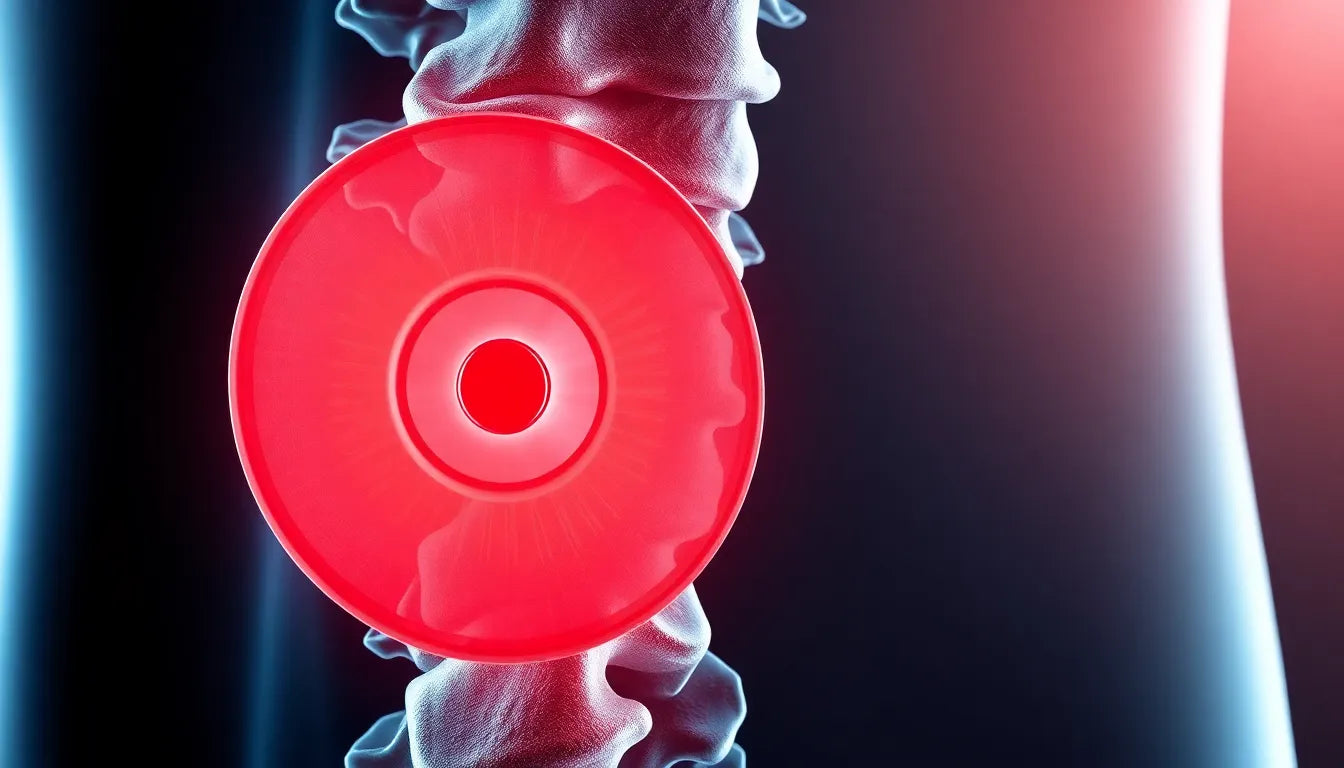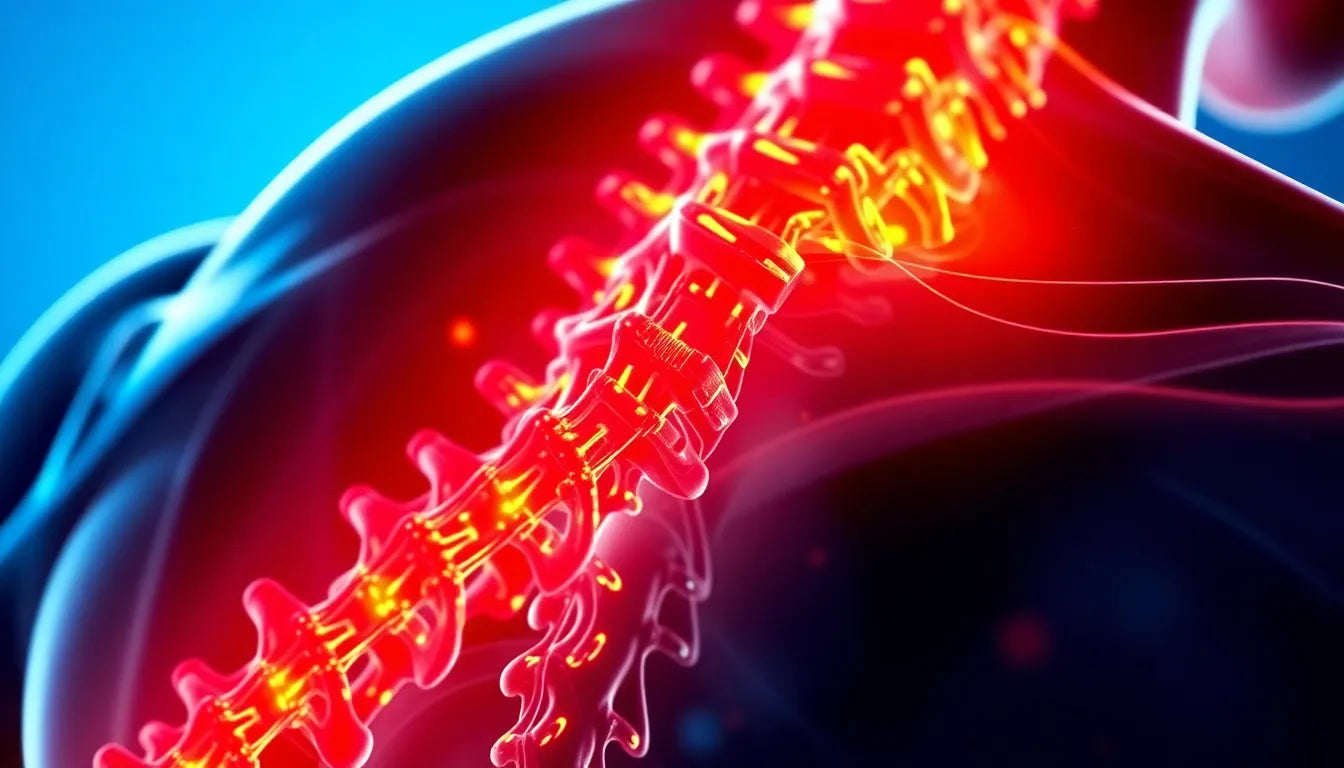Dealing with a herniated disc can be a daunting experience, but understanding the condition is the first step towards recovery. A herniated disc occurs when the soft center of a spinal disc pushes through a crack in the tougher exterior casing. This can happen due to a variety of reasons, including age-related wear and tear, sudden heavy lifting, or even an injury. Common symptoms of a herniated disc include pain, numbness, tingling, and muscle weakness, which can significantly impact one's daily activities.
Understanding the impact on daily life
The effects of a herniated disc extend beyond physical discomfort. It can severely limit mobility, making simple tasks like walking or bending over challenging. This limitation can lead to a decreased quality of life, as individuals may find themselves unable to participate in activities they once enjoyed. Furthermore, the condition can also take an emotional toll, leading to stress and anxiety due to the sudden change in physical capabilities.
Setting the stage for recovery
Despite the challenges posed by a herniated disc, recovery is not only possible but also achievable with the right approach. Addressing and treating the condition promptly is crucial to prevent further complications. The journey to reclaiming your life begins with understanding that recovery is within reach. In the following sections, we will explore various steps and strategies to facilitate this process, from medical consultations to lifestyle adjustments, all aimed at helping you bounce back from a herniated disc.
Initial steps to recovery
Recovering from a herniated disc begins with understanding the importance of seeking professional guidance. Consulting healthcare professionals is crucial to ensure an accurate diagnosis and effective treatment plan. Specialists may use diagnostic methods such as MRI, CT scans, and physical exams to assess the severity of the disc herniation and tailor a recovery strategy accordingly.
Pain management techniques
Managing pain is a critical component of recovering from a herniated disc. Over-the-counter medications, such as nonsteroidal anti-inflammatory drugs (NSAIDs) like ibuprofen, can help alleviate mild to moderate pain. For more severe discomfort, prescription medications may be necessary under the guidance of a healthcare provider. Additionally, alternative therapies like acupuncture and chiropractic adjustments can provide relief by addressing pain and promoting healing through non-invasive means.
The role of physical therapy and exercise
Physical therapy plays a vital role in the recovery process by helping to strengthen muscles and improve flexibility. A well-structured exercise routine can support spinal health and prevent future injuries. Physical therapists often recommend gentle stretching exercises, such as hamstring and lower back stretches, to enhance flexibility and reduce tension.
Sample exercise routine
Incorporating core strengthening exercises, like planks and bridges, into your routine can provide additional support to the spine. These exercises help stabilize the core muscles, which are essential for maintaining proper posture and reducing the risk of further injury. Low-impact aerobic activities, such as swimming and walking, are also beneficial, as they promote cardiovascular health without putting excessive strain on the back.
Lifestyle modifications for recovery
Making certain lifestyle changes can significantly aid in the recovery from a herniated disc. Maintaining a healthy weight is essential, as excess body weight can increase pressure on the spine, exacerbating discomfort. Ergonomic adjustments, such as using supportive seating and maintaining proper posture, can also alleviate strain on the back during daily activities.
Additionally, paying attention to sleeping positions can make a difference in recovery. Sleeping on your side with a pillow between your knees or on your back with a pillow under your knees can help maintain the spine's natural alignment and reduce pressure on the herniated disc.
By following these initial steps and making necessary adjustments, individuals can set a solid foundation for recovery. The journey may require patience and dedication, but with the right approach, regaining mobility and reclaiming quality of life is entirely achievable.
Advanced treatment options for herniated discs
While many individuals find relief through non-surgical methods, some cases of herniated discs may require more advanced treatment. Surgical interventions are considered when symptoms persist despite conservative treatments or if there is significant nerve compression. Common procedures include discectomy, which involves removing the herniated portion of the disc, and laminectomy, where part of the vertebra is removed to relieve pressure on the spinal cord or nerves.
Innovative therapies
In addition to traditional surgical options, innovative therapies are emerging as viable alternatives. Laser therapy, for example, uses focused light to reduce inflammation and pain, while spinal decompression therapy involves stretching the spine to create negative pressure, potentially allowing the disc to reposition itself and heal. These methods offer promising results, but it's essential to discuss their benefits and considerations with a healthcare provider to determine the most suitable approach for your condition.
Emotional and mental well-being during recovery
Coping with a herniated disc can be emotionally taxing, impacting mental health and overall well-being. It's crucial to address these challenges as part of a comprehensive recovery plan. Engaging in stress-reduction techniques such as mindfulness, meditation, or yoga can help manage anxiety and improve mood. Additionally, building a strong support system with family, friends, and support groups can provide encouragement and motivation throughout the recovery journey.
Conclusion: Taking charge of your recovery
Recovering from a herniated disc is a multifaceted process that involves medical treatment, physical therapy, lifestyle adjustments, and emotional support. By understanding the condition and exploring various treatment options, individuals can take proactive steps to regain their health and quality of life. Remember, seeking professional guidance and staying committed to your recovery plan are key to bouncing back and reclaiming your life from the challenges posed by a herniated disc.
Frequently Asked Questions
Q1: How long does it typically take to recover from a herniated disc?
Recovery time varies depending on the severity of the herniation and the treatment approach. Many people experience improvement within a few weeks to months with proper care and therapy.
Q2: Can I prevent a herniated disc from happening again?
Yes, prevention strategies include regular exercise to strengthen back muscles, maintaining a healthy weight, and using proper techniques when lifting heavy objects to reduce strain on the spine.
Q3: Are there any activities I should avoid during recovery?
During recovery, it's advisable to avoid heavy lifting, high-impact sports, and any activities that exacerbate pain. Focus on low-impact exercises and follow your healthcare provider's recommendations.
Q4: Is surgery always necessary for a herniated disc?
No, surgery is not always required. Most cases improve with non-surgical treatments such as physical therapy and pain management. Surgery is typically considered if symptoms persist or worsen.
Q5: Can a herniated disc heal on its own?
In some instances, the body can reabsorb the herniated material, leading to natural healing over time. Conservative treatments can support this process and alleviate symptoms.
Sources
- Mayo Clinic Staff. (2021). "Herniated Disk: Symptoms and Causes." Mayo Clinic.
- Pietrangelo, A. (2020). "Herniated Disc: Causes, Symptoms, and Diagnosis." Healthline.
- Butler, S. (2019). "Understanding Herniated Disc Problems." Spine-health.
- Shiel, W. C. (2021). "Herniated Disc: Overview and Treatment." WebMD.
- Cleveland Clinic Staff. (2020). "Herniated Disc: Treatment and Recovery." Cleveland Clinic.


















